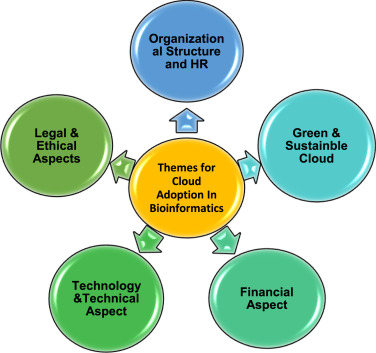
Agile Project Management Embraces the Cloud: Enhancing Speed, Flexibility, and Delivery
In the rapidly evolving digital environment of today, companies are increasingly adopting agile project management to maintain their competitive edge. Whether it’s software development, launching a new product, or refining a service, agile empowers teams to respond swiftly and adjust to changes through short, iterative cycles and ongoing collaboration. However, for agile methodologies to flourish, they require a corresponding dynamic technological infrastructure — precisely where cloud solutions shine.
Cloud technology delivers the agility, scalability, and automation necessary to implement agile practices effectively at every phase. From expediting global collaboration to establishing test environments within minutes, cloud infrastructure eliminates the hindrances of traditional systems, enabling teams to produce high-quality results more rapidly.
Let’s delve into the convergence of cloud infrastructure and agile project management, and uncover how they collectively drive innovation, efficiency, and speed.
Fundamental Tenets of Agile Project Management
Agile project management is built upon key tenets that emphasize customer value, adaptability, and team cooperation. Regardless of whether an organization employs Scrum, Kanban, or another agile framework, certain concepts remain constant:
– Enhanced Collaboration: Agile teams operate cross-functionally, with developers, testers, designers, and business stakeholders collaborating closely throughout the product lifecycle.
– Regular Deployments: Agile encourages continuous integration and delivery, releasing small, functional increments instead of large, infrequent updates.
– Ongoing Feedback Loops: Each iteration concludes with a review and retrospective, incorporating insights into the next cycle for continual enhancement.
These methodologies significantly depend on the capacity to pivot swiftly — a capability often hampered by legacy on-premises infrastructure. Manual server setup, restricted access for remote teams, and inflexible capacity planning are just a few of the obstacles. These challenges underscore the necessity for adaptable, on-demand computing.
Introducing cloud infrastructure.
What Constitutes Cloud Infrastructure?
Cloud infrastructure denotes the virtualized computing environment accessible via the internet. It encompasses servers, storage, networks, and associated tools provided by cloud service companies such as Amazon Web Services (AWS), Microsoft Azure, Google Cloud Platform (GCP), and rising providers like TensorWave.
Organizations can tap into this infrastructure through a subscription or pay-as-you-go model, bypassing hefty investments in physical hardware or data centers. Cloud infrastructure empowers businesses to:
– Automatically adjust resources according to demand
– Create and dismantle environments in mere minutes
– Facilitate global access to applications and data from any location
In essence, cloud infrastructure transforms IT from a cost burden into a flexible service — ideally suited for the iterative, collaborative characteristics of agile methodologies.
How Cloud Infrastructure Bolsters Agile Practices
Agile project management flourishes on adaptability, speed, and seamless teamwork. Cloud infrastructure bolsters this in multiple impactful ways.
1. Instant Collaboration and Support for Distributed Teams
Remote and hybrid work paradigms are now commonplace. Agile’s dependence on daily communication, quick iterations, and fast feedback loops renders global collaboration tools essential.
Cloud-enabled platforms like Jira, Trello, GitHub, and Slack enhance teamwork by:
– Hosting Kanban boards and sprint backlogs accessible to all stakeholders
– Offering real-time messaging and file sharing for virtual status meetings
– Ensuring document synchronization so everyone uses the latest version
By utilizing cloud-hosted collaboration tools, agile teams remain connected, efficient, and aligned — regardless of their physical locations.
2. Cost-Effectiveness and Resource Efficiency
Agile teams require the ability to experiment, quickly set up environments, and dismantle them when they are no longer necessary — a costly or cumbersome process within traditional setups.
Cloud infrastructure provides financial advantages universally:
– Pay-as-you-go pricing models allow teams to pay solely for what they utilize
– Temporary environments can be established for specific sprints or bug fixes and removed immediately
– Platforms can auto-scale to accommodate increased traffic during product launches or presentations
This flexibility and cost-effectiveness enable agile teams to innovate without the fear of resource waste or infrastructure delays.
3. Security, Compliance, and Risk Management
Accelerating progress shouldn’t come at the expense of security.
Modern cloud providers — including new entrants like TensorWave and established names like AWS — integrate security within their services:
– Built-in encryption (for data at rest and in transit)
– Identity and Access Management (IAM) for role-based permissions
– Automated backups and disaster recovery
– Compliance with standards such as GDPR, SOC 2, ISO 27001, and HIPAA
Additionally, advancements in DevSecOps (Development, Security, and Operations) empower agile teams to incorporate security measures directly into their workflows. Scanning code for vulnerabilities prior to deployment ensures safe and compliant systems — without hindering delivery schedules.
Cloud infrastructures also offer global redundancy, guaranteeing that even in the event of a server outage, data remains secure and downtime is minimized.
Key Insights
As agile methodologies become increasingly prevalent across organizations of all sizes, the supporting infrastructure must evolve in tandem. Cloud infrastructure provides the ideal foundation for agile project management, delivering speed, security, and scalability.